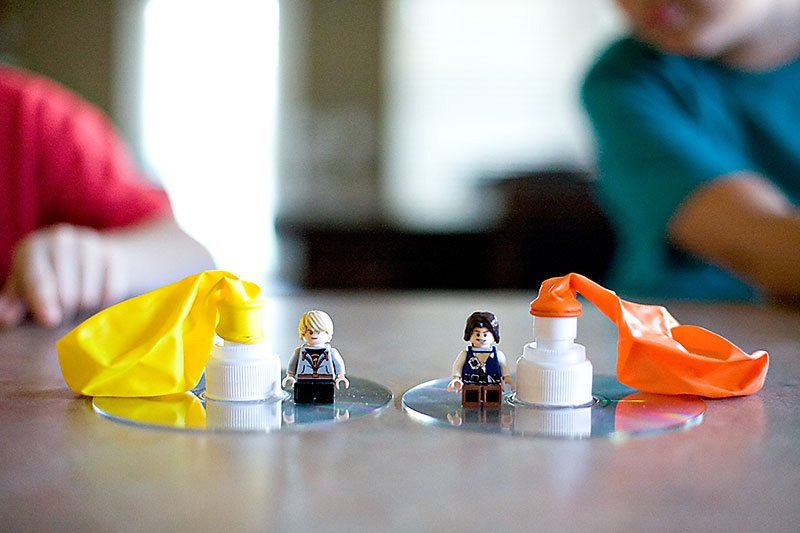Build your own mini craft
Pages in this sectionLearning about the science of lift off
Getting into space requires a considerable amount of force. While building this simple mini hovercraft isn’t rocket science, it might give you a better understanding of what the scientists are up against when they send a rocket into space, and how Newton’s laws of motion affect their work.
Scientists are working to reduce how much fuel is used in space exploration. To do this they’re focusing on the initial thrust to get the rocket off the ground and generating the biggest increase in speed for the smallest mass of fuel once the rocket is in space.
At the root of their work is Newton’s second law of motion: that an object’s acceleration depends on two variables:
- Its mass
- The force working on the object.

What you need
- CD or DVD (or you could use a paper plate)
- Pop-up cap from a disposable drinks bottle
- Strong glue
- A balloon
- Fuel – air from your lungs
- A smooth floor or surface
Making your mini hovercraft
If you’re using a paper plate, make a hole in its centre. It needn’t be too big; something the diameter of a pen will be fine. Turn the plate upside down.
- Glue the bottle top on to the centre of the CD or plate, so that it covers the hole. Make sure the glue makes a good seal between the CD and the bottle top. There shouldn’t be any gaps or holes in the glue, otherwise air will leak out. Leave it to dry.
- Inflate the balloon and twist the end around your finger to stop the air coming out. Make sure the pop-up bottle cap is closed and then carefully stretch the neck of the balloon over the bottle cap.
- Pull up the bottle cap and watch your mini hovercraft glide over the smooth surface. When the air runs out, the hovercraft will come to a standstill. It won’t move again until a force is exerted on it, as stated in Newton’s first law of motion.
You can experiment using different sized balloons or by adding some weight evenly to the CD/DVD. What happens if you put the hovercraft on a different surface? Notice how the changes you make affect the movement of the hovercraft.
The air in the balloon is the fuel. The only way the air can escape from the balloon is through the small hole in the bottle top. As it escapes, it exerts a force on the body of the hovercraft, which moves it. As the air runs out, the force is reduced and the hovercraft decelerates. If the hovercraft is heavier, or has a greater mass, it will move more slowly or it may not move at all.
Watch footage of the Soyuz space rocket take off and you start to understand the immense force that’s required to get people into space.